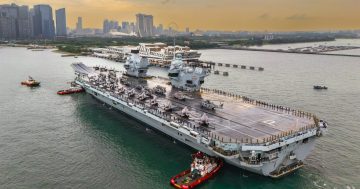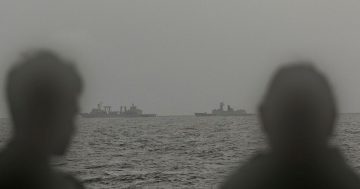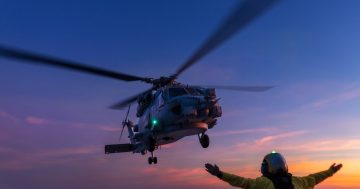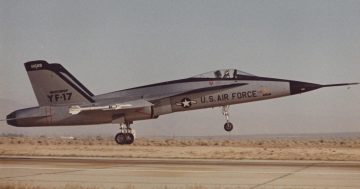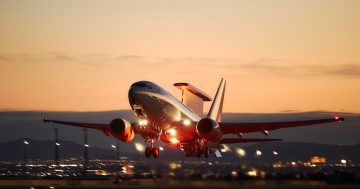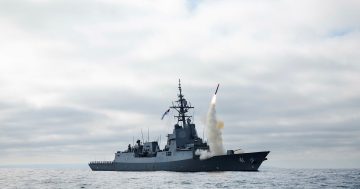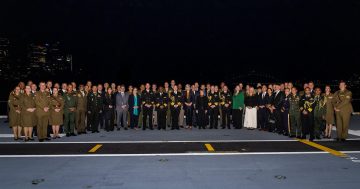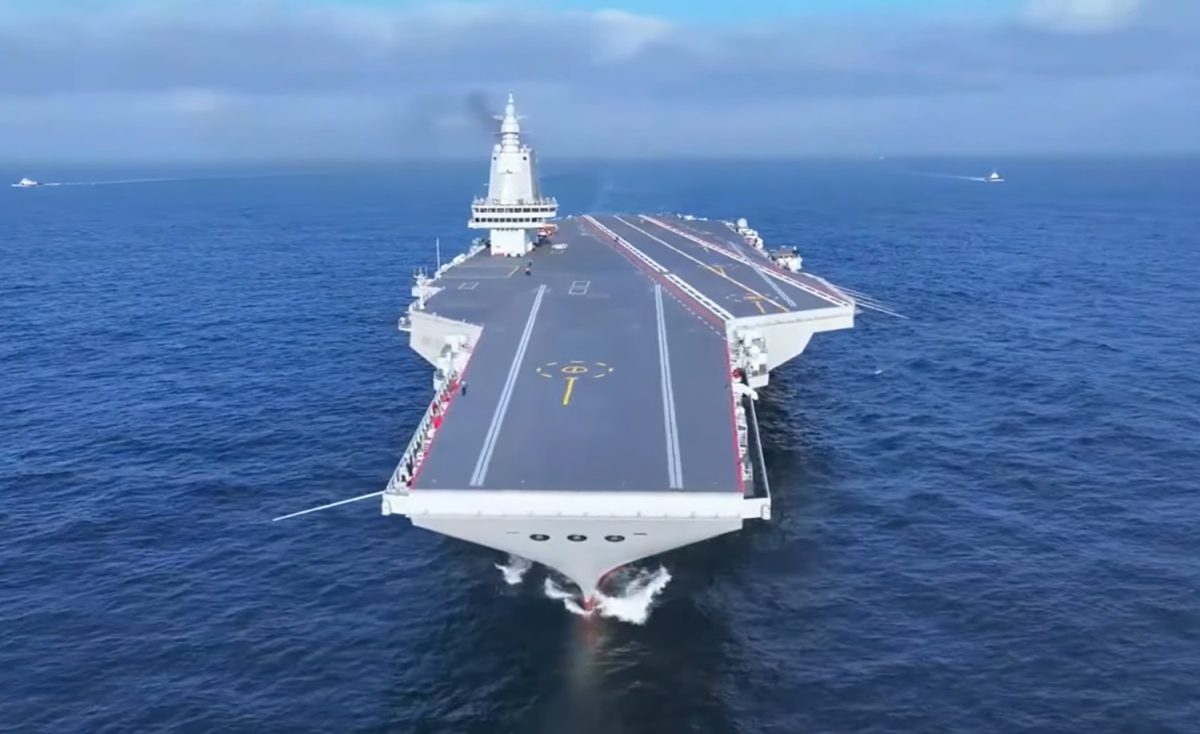
The Type 003 Fujian during sea trials earlier this month. Photo: China Military.
The first aircraft carrier wholly designed and built in China has completed its first series of sea trials.
The Type 003 Fujian was built at the gigantic Jiangnan Shipyard in Shanghai and was launched in June 2022. After a fitout period, it departed for sea trials in early May, returning to port a few days later.
The Fujian is the People’s Liberation Army Navy’s (PLA-N) third and, by far, most capable aircraft carrier.
The first carrier was acquired from Ukraine as the Varyag – a sister ship to Russia’s only carrier, the Admiral Kuznetsov – in 1998. The incomplete Varyag had languished in a shipyard following the break-up of the Soviet Union.
After an extensive refit that took some 15 years, the Type 001, as it became known, was christened as Liaoning and entered PLA-N service in 2016. A second vessel, the Type 002 Shandong, was subsequently built using the Liaoning as a template but with extensive updates, and it was launched in April 2017.
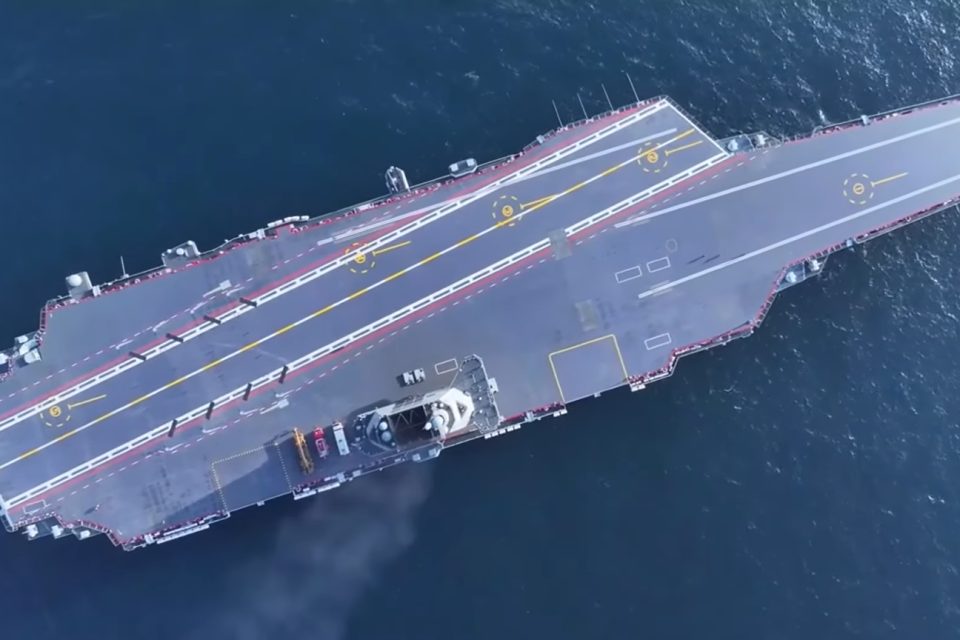
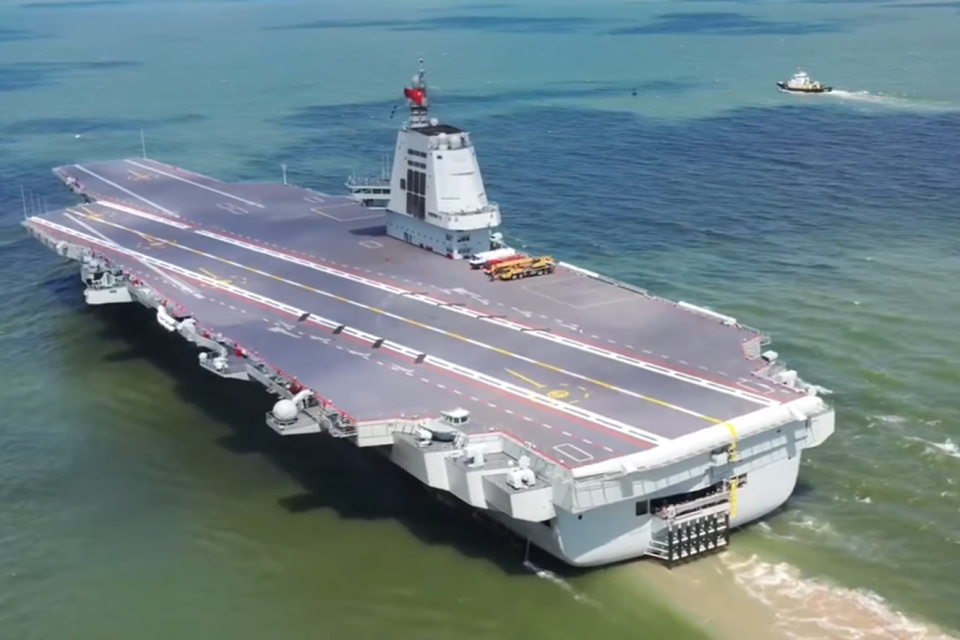
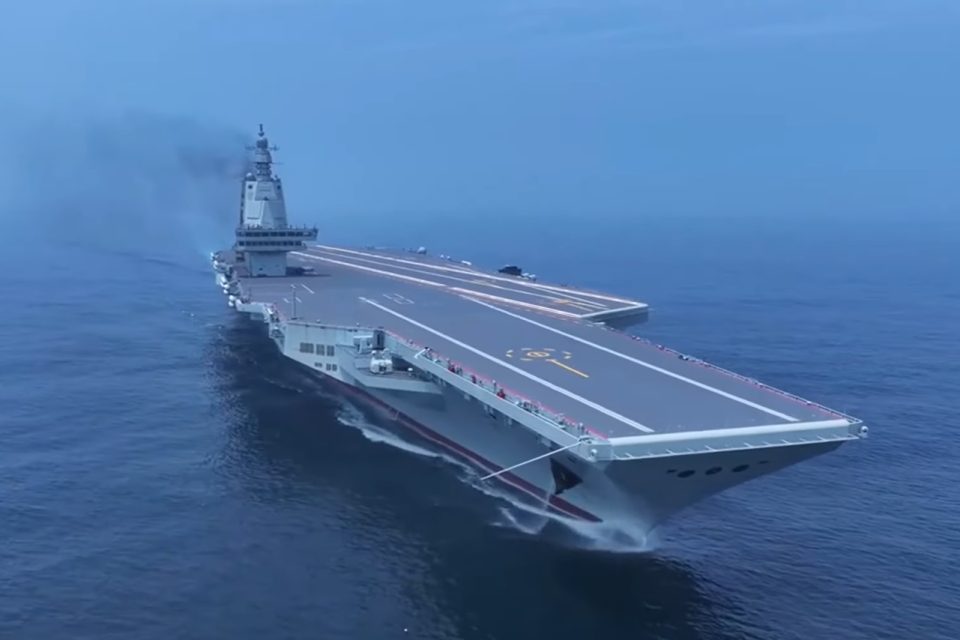
Russia’s Admiral Kuznetsov and China’s Type 001/002 carriers differ from large-deck US aircraft carriers in that they do not have a catapult system with which to launch aircraft. Instead, the aircraft are run up to full power against retractable wheel chocks in the deck and are then released and launched with the aid of a ”ski jump” ramp.
Because of the need for a high reserve of power, only the powerful Russian Sukhoi Su-33 and its Chinese Shenyang J-15 copy are really capable of launching this way and are consequently quite limited in the payload they can carry.
The UK’s two Queen Elizabeth-class aircraft carriers also use a ramp to launch their combat aircraft, but the Lockheed Martin F-35Bs they employ have a unique short-take and vertical-land (STOVL) capability aided by a large lift fan in the forward fuselage and a downward-swivelling main exhaust. US Navy Wasp and America-class amphibious vessels also carry F-35Bs, but do not use a ramp to launch them.
The new Type 003 carrier looks more conventional than its predecessors. It displaces an estimated 80,000 tonnes – US Nimitz and Ford-class carriers are about 15 per cent larger. The Type 003 has also done away with a ramp, and instead will use an electro-magnetic aircraft launch system (EMALS), on three catapults, two on the bow and one on the starboard ”waist”. US carriers have four catapults.
The Fujian will be capable of employing an estimated 24 J-15 fighters, four J-15D electronic attack aircraft, 12 of the new and stealthy J-35 attack aircraft, eight Z-18 and four Z-9 helicopters, and four KJ-600 airborne early warning aircraft.
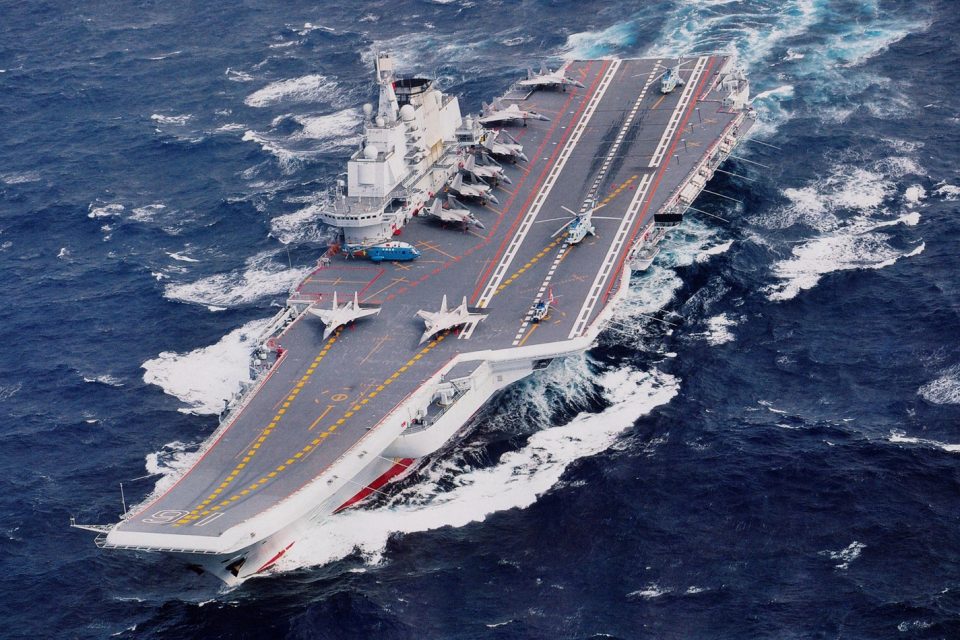
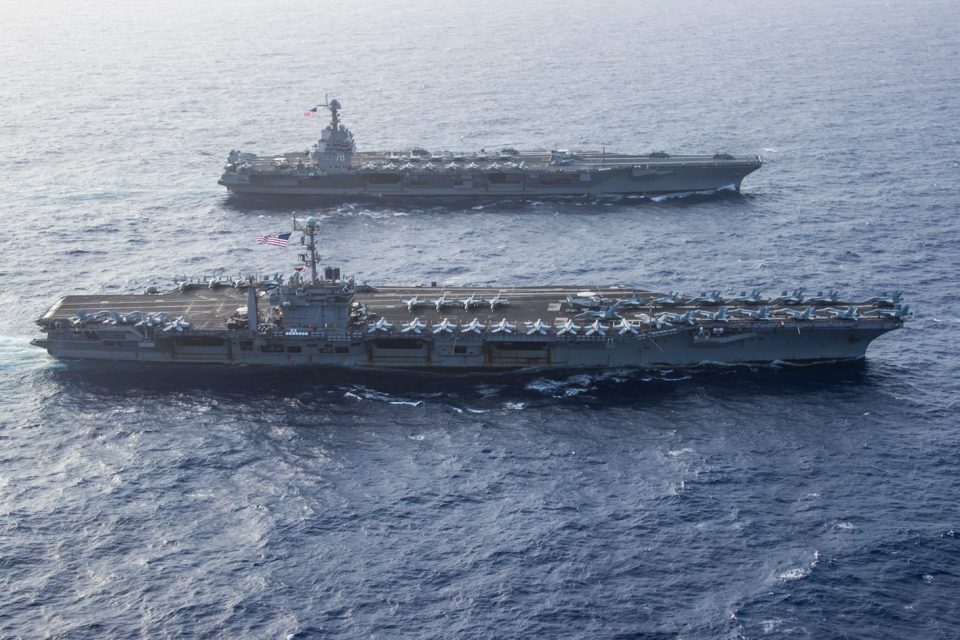
By comparison, a US Navy carrier has an airwing of up to about 75 aircraft, including 36-48 F/A-18E/F Super Hornets, between six and 10 EA-18G Growler electronic attack aircraft, 10-20 F-35C attack aircraft, four E-2D Hawkeye airborne early warning and control aircraft, two CMV-22 Osprey transports, and about six MH-60R/S helicopters.
Apart from helicopters, no aircraft has landed on or taken off from the Fujian as yet, so it is not known how effective the vessel’s EMALS will be. The US version of EMALS used by the new Ford class has had a troublesome development, but was proven during a recent extended deployment on the USS Gerald Ford in 2023.
Another major difference between the Chinese carriers and their US counterparts is that they are conventionally powered, meaning they will need refuelling on extended deployments. The US carriers are all nuclear-powered and therefore don’t require any fuel.
But all aircraft carriers – regardless of how they are powered – require jet fuel for their air wing, and this needs to be regularly topped up by accompanying replenishment ships.
China has ambitions to have six aircraft carriers in service by 2035, and hasn’t ruled out switching to nuclear power for future vessels. The development of the carriers follows a rapid build-up of other surface combatants required to escort the carriers. Of these, the Type 52D destroyers and Type 55 cruisers are most capable, sporting advanced sensors and anti-air, anti-ship and land-attack missile batteries.
The PLA-N has also launched several large amphibious assault ships in recent years and is rapidly growing its fleet of nuclear-powered attack and ballistic missile submarines.


